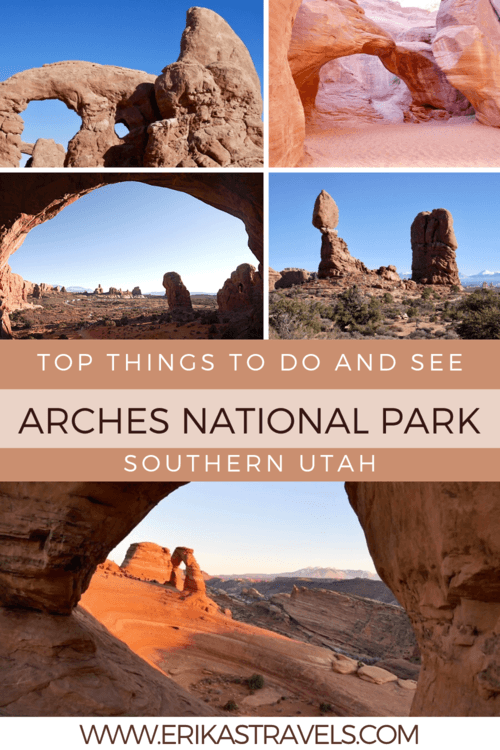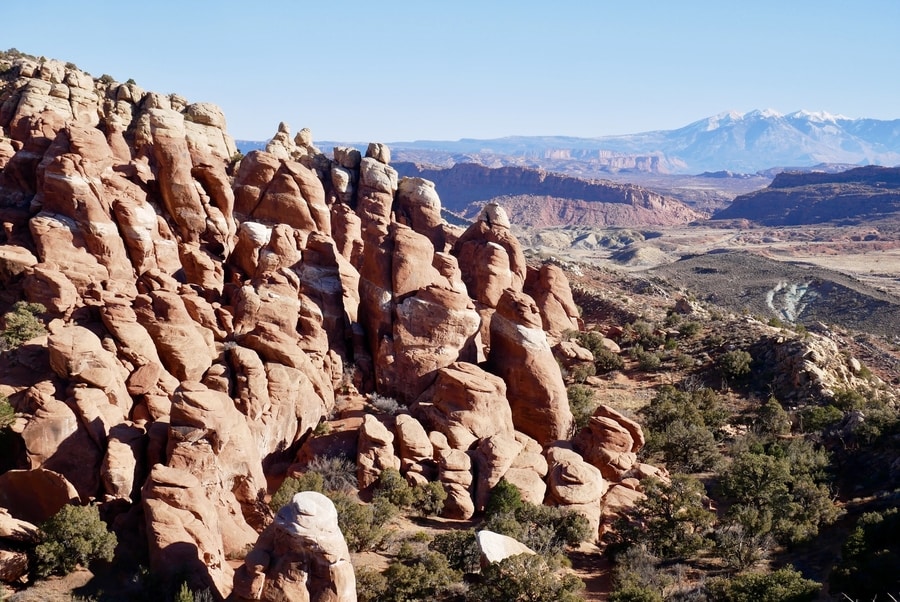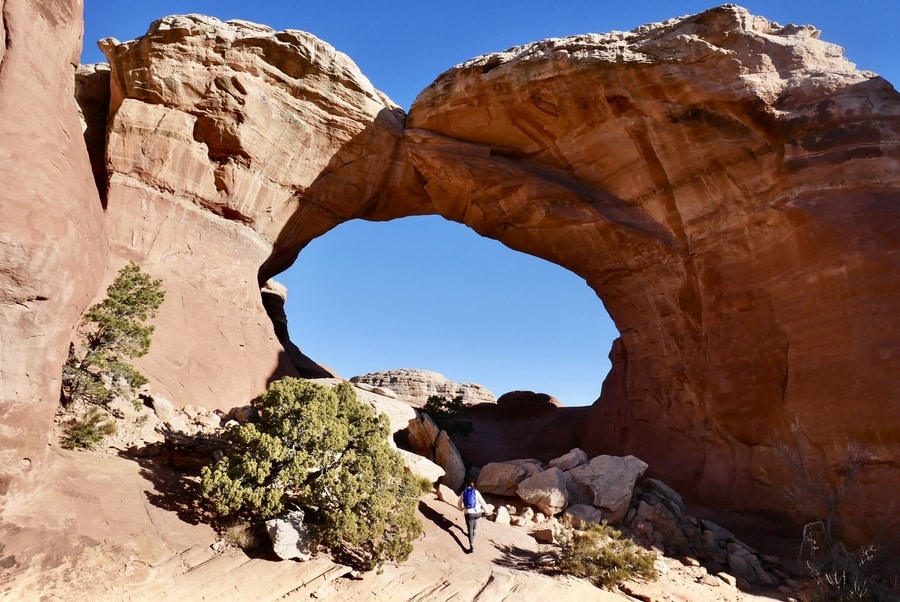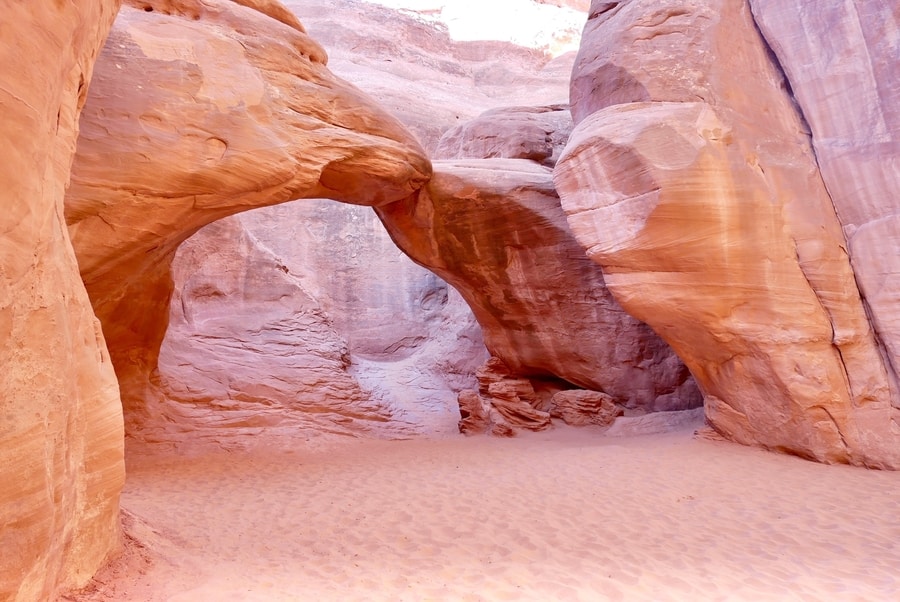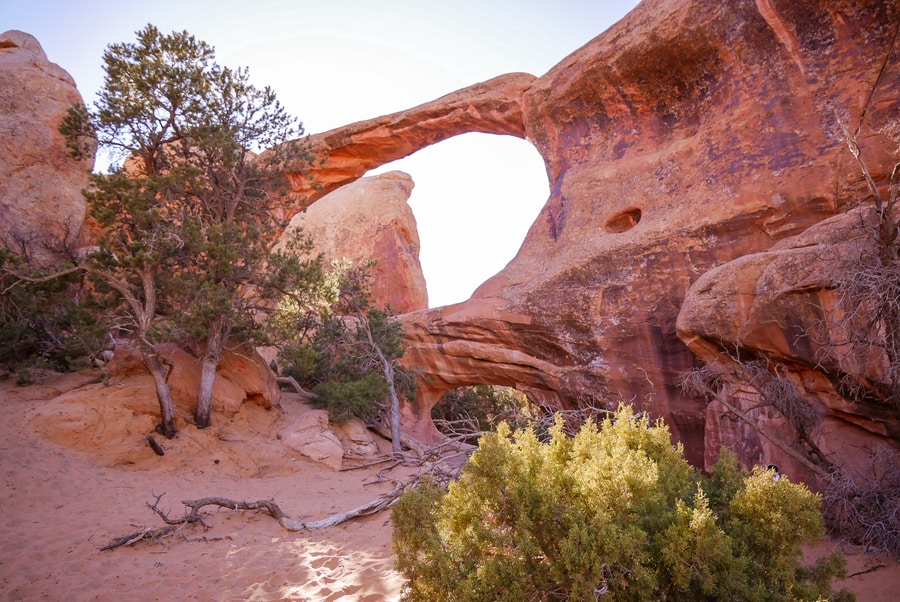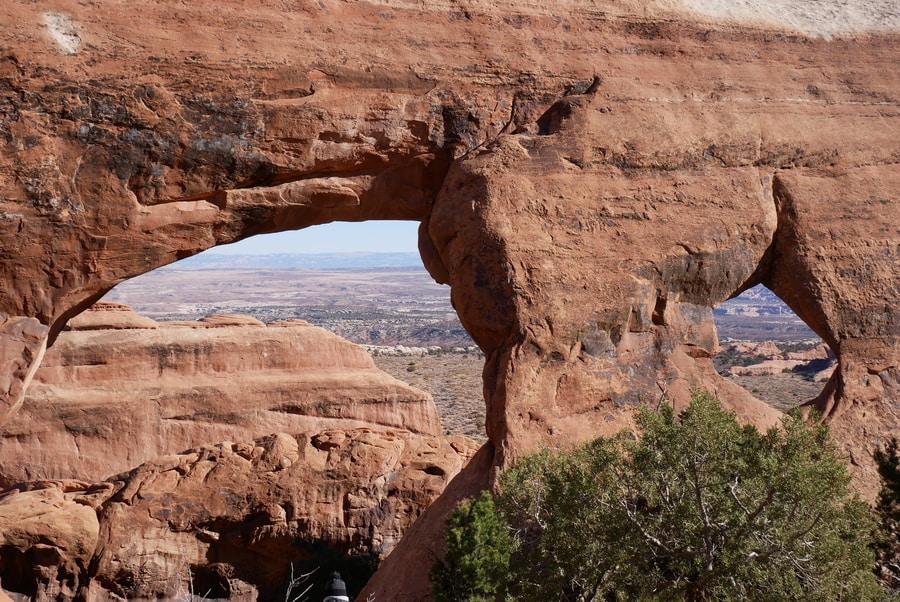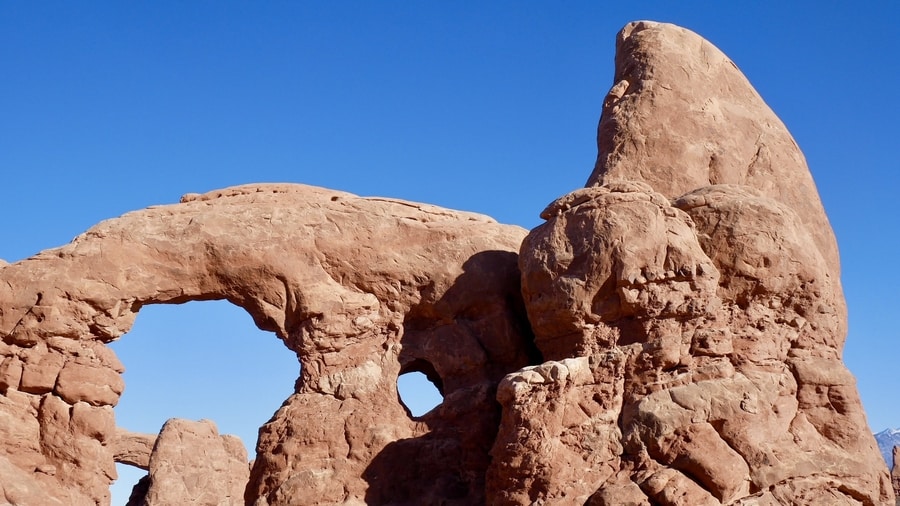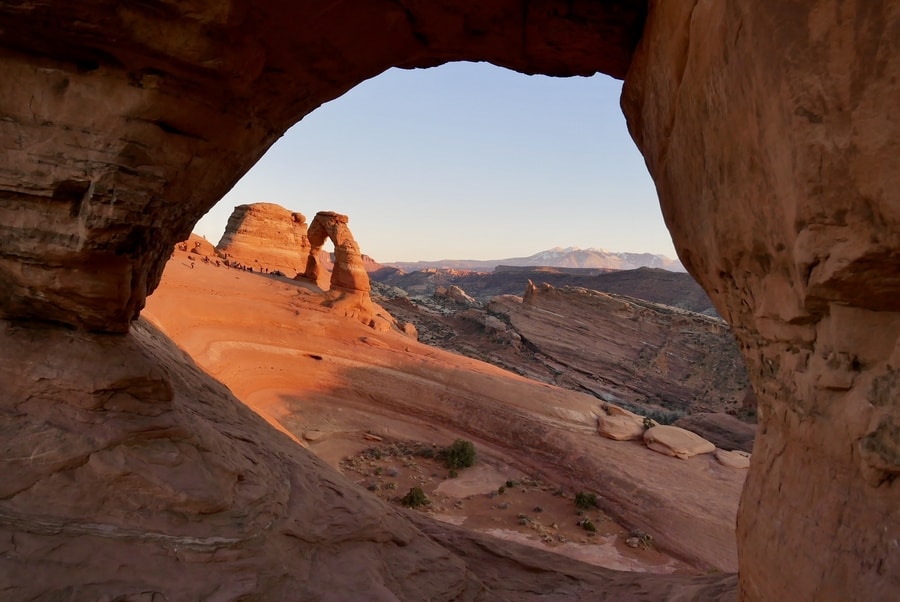
Things to Do in Arches National Park
Arches National Park is a masterpiece of nature and a beloved Utah tourist destination. Renowned the world over for its delicate rock garden, the national park is among the most iconic places in the United States.
In Arches, giant sandstone arcs frame snowy peaks and juniper-clad desertscape. While the entire area is a red rock paradise, there is no doubt that these natural rock arches are its primary draw.
Indeed, its signature sandstone span is so lauded, that it has become a symbol of the American Southwest—emblazoned on license plates, posted all over Instagram, and impressed upon the memories of its 1.5 million annual visitors.
BEST VIEWPOINTS AND HIKES IN ARCHES
Over the course of millennia, erosion has chiseled an ever-evolving landscape. Natural rock arches are continually forming, and collapsing, and then forming again.
Utah’s Colorado Plateau is home to the densest concentrations of natural arches in the world. The national park alone claims to contain over 2,000 sandstone spans in just over 100 square miles. Some are mere slivers, while others have openings that surpass 300 ft in diameter.
Many of the park’s sculpted arches are truly legendary.
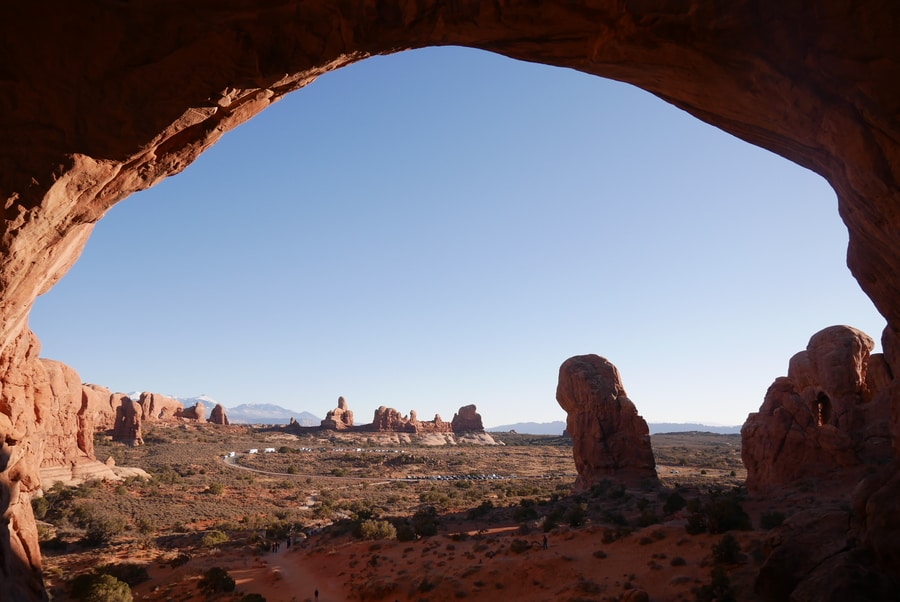
Arches National Park’s iconic stone structures lie scattered about the park. Some are clearly visible from the scenic drive, others require short hikes.
The top things to do in Arches can generally be divided into four main sections: roadside attractions, the Windows Area, the Delicate Arch offshoot, and Devil’s Garden.
ARCHES SCENIC DRIVE
Most of the viewpoints within Arches lie along the park’s scenic drive.
Unlike Zion or the Canyonlands Needles District, the park doesn’t have an extensive network of trails suitable for backcountry exploration.
Instead, an easy drive makes the spectacular landforms accessible to all.
PARK AVENUE AND THE COURTHOUSE TOWERS
After climbing a series of switchbacks and passing by the Arches Visitor Center, the national park’s landscape opens up with spectacular views of the park’s red rock monoliths and sheer sandstone cliffs.
Park Avenue and the Courthouse Towers are the first major landmarks along the drive.
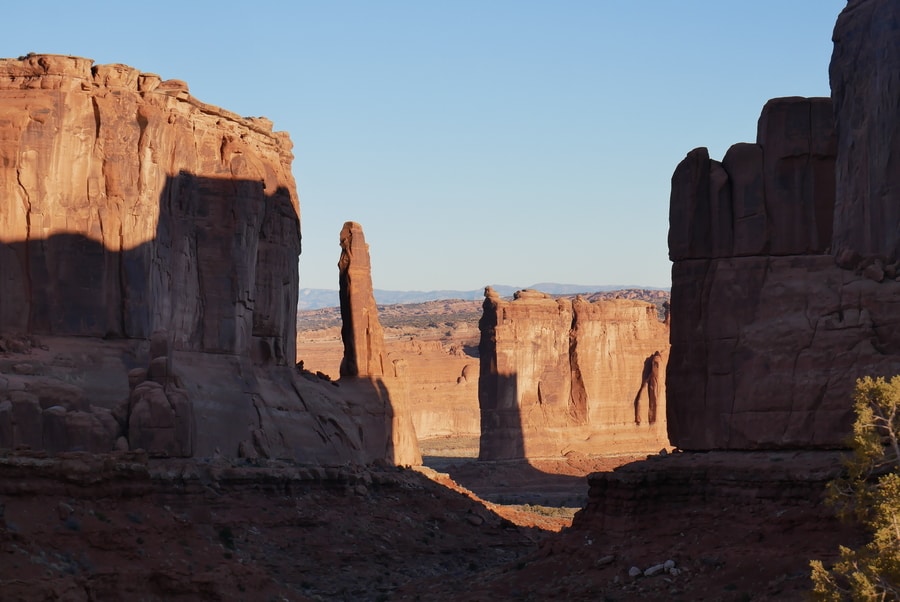
A roadside viewpoint signifies the starting point of the 1.8 mile Park Avenue Trail. The trail descends steeply into the spectacular canyon and continues to the Courthouse Towers.
Many travelers choose to hike the trail one-way, as long as there is someone to collect them at the other end.
BALANCED ROCK
Balanced Rock, one of the most iconic features in the park, stands a staggering 128 feet tall. It resembles an egg that sits precariously on a lopsided tee.
While the peculiar formation appears perfectly in place, it actually isn’t balanced at all. The Entrada Sandstone boulder sits attached to its eroding mudstone pedestal.
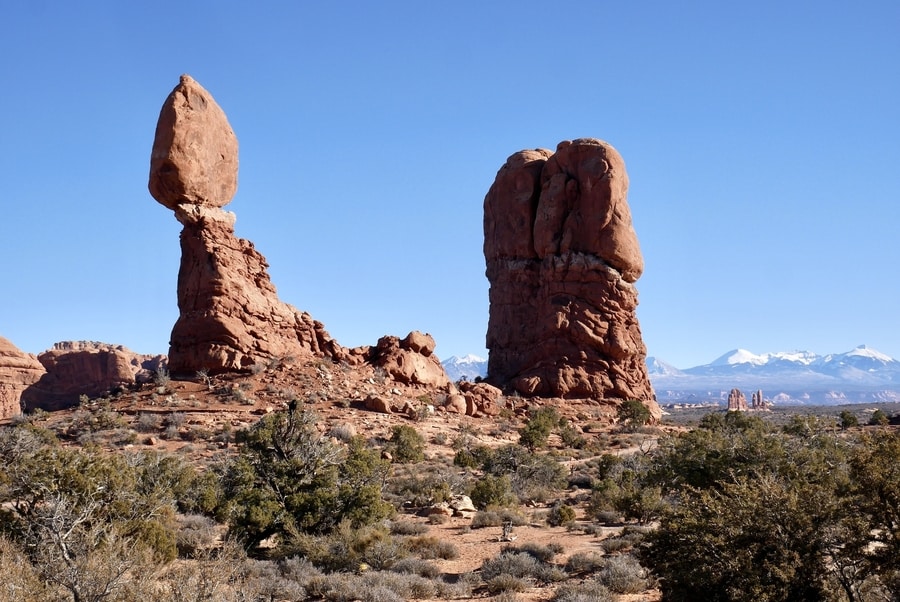
A 0.3 mile walk wraps around the rock spire. It provides up-close views of the landmark formation.
THE FIERY FURNACE
The Fiery Furnace is one of Arches National Park’s top roadside attractions. The area consists of tightly-packed boulders that erupt from the desert floor like billowing flames.
Due to the maze-like nature of its terrain, tourists are prohibited from meandering freely around the Fiery Furnace’s red rock boulders. There are no trail signs or markers in the area, and GPS devices tend to fail among the lofty sandstone walls.
A 1.7 mile ranger-led walk through the Fiery Furnace is the only way in which tourists can access the area’s interior.
On a previous visit to Utah, Dan and I took part in the ranger-led walk. I remember passing through a narrow slot canyon and coming across a hidden arch.
During my most recent visit, however, I was not able to hike in the area due to Covid closures.
Thus, Dan and I decided to soak in the area’s scenery from the Fiery Furnace’s roadside viewpoints instead.
SAND DUNE ARCH AND BROKEN ARCH LOOP
As the Arches National Park Road continues toward Devil’s Garden, the density of its rock arches increases drastically. The northern end of the park contains arches at every bend—some hidden behind rock fins, others prominently displayed by the roadside.
While most travelers will head straight toward Landscape Arch in the Devil’s Garden, it is worth relishing the lesser-known stone spans en-route.
A trailhead lies just before the Salt Valley Road turnoff. The path brings visitors to two split red rock arches.
Sand Dune Arch is accessible via the trail’s right fork. It is sheltered amidst a coliseum of stone fins. To the left, Broken Arch stands majestically against Utah’s cloudless sky.
Those who choose to continue past Broken Arch, will find a loop trail that leads to Tapestry Arch and the Devil’s Garden Campground.
Just beyond the Sand Dune Arch Trailhead, Skyline Arch sits perched near the road. A short out-and-back hike on a well-defined path showcases views of the lofty crescent-shaped span.
DEVIL’S GARDEN
Devil’s Garden lies at the very end of the scenic drive and is home to Arches National Park’s longest official hiking trail. The scenic hike through Devil’s Garden winds between towering rock spires, passes by the world’s longest natural bridge, and brings hikers to some of the park’s more off-the-beaten-path treasures.
The 1.3 mile trail to Landscape Arch is among the most popular hikes in Arches.
But venture beyond, and you’ll be able to enjoy some of the park’s best viewpoints with only a fraction of the crowds.
Devil’s Garden Loop is the park’s most adventurous trek. For those looking to lace up their hiking boots, it brings a slew of rewards. In just under eight miles, the trail features no less than eight spectacular natural arches.
LANDSCAPE ARCH HIKE
Landscape Arch lies 1.3 miles down the Devil’s Garden Loop, beyond Tunnel Arch and Pine Tree Arch. The paper-thin arch extends for 306 ft and is only 11 ft thick at its center.
In 1991, a 60 ft slab fell from the rock, relegating its shape to a mere sliver.
Today, the arch looks as though it is only hanging on by a thread.
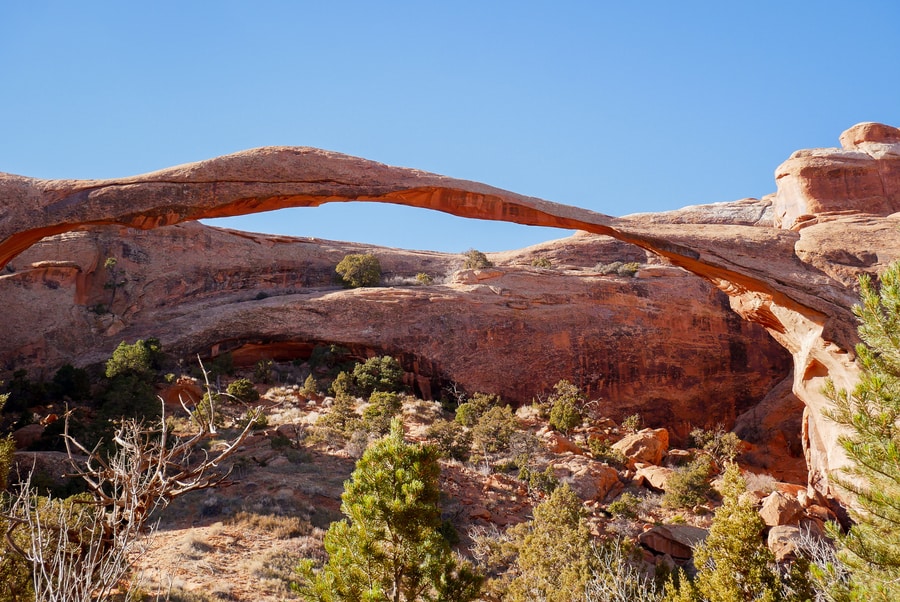
Beyond Landscape Arch, the trail gets significantly less crowded. It forks off toward Navajo Arch and Partition Arch, before continuing onward, to Dark Arch, Double O Arch and the Dark Angel Spire.
Upon reaching the Dark Angel Spire, some hikers choose to return to the parking lot the way they came.
Others complete the loop by following the lightly-trafficked Primitive Trail.
DEVIL’S GARDEN PRIMITIVE TRAIL
While Landscape Arch is among the most popular hikes in Arches National Park, the last portion of Devil’s Garden Trail only draws a fraction of the area’s crowds.
The lightly-trafficked trail is moderately strenuous and descends from Double O Arch into a valley of towering pinnacles. Its path threads through sandstone fins that stand on end like vertically-stacked pancakes.
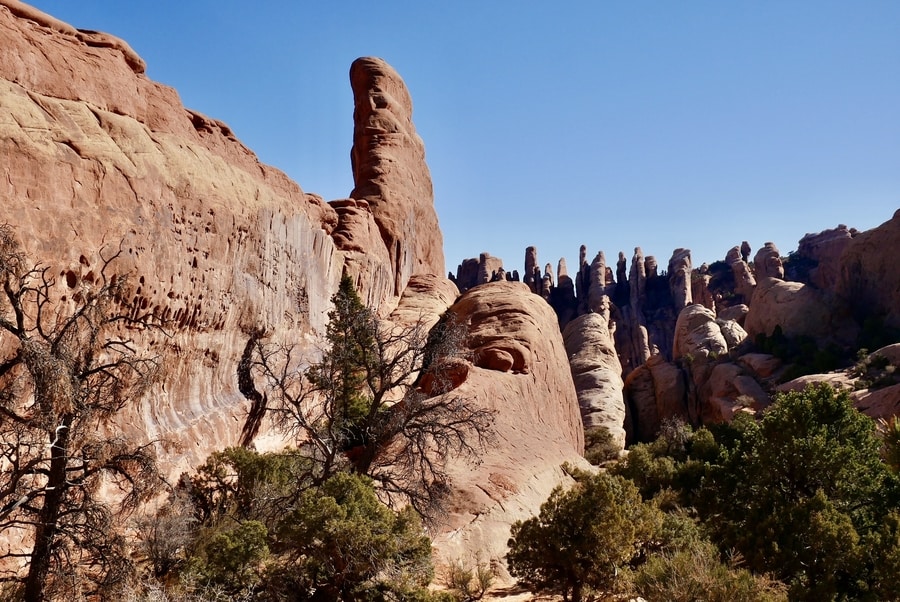
The 2.1 mile (one-way) lightly-trafficked trail meanders through a stone jungle and brings visitors to little-known Private Arch.
It requires a bit of scrambling and trail-finding, but isn’t particularly strenuous or technical.
THE WINDOWS SECTION
Some consider the Windows Section to be the beating heart of Arches National Park. The area contains a large concentration of windows that stand within eyeshot of each other.
The whole Windows area is full of unique and captivating stone formations.
The Windows, Turret Arch, and Double Arch are just a few of the awe-inspiring expanses that lie within close proximity of each other. Other named features in this area include the Garden of Eden and the Parade of Elephants.
NORTH AND SOUTH WINDOWS LOOP
A popular short loop in the Windows Area visits three impressive arches. Also known as the Spectacles, North Window and South Window stand side by side. The twin arches form openings in the same sandstone fin. A large nose-shaped boulder separates the eyes in the rock.
Visitors can stand directly beneath North Window and look out at a rust-colored landscape of sandstone hoodoos. A primitive trail through this area begins below the South Window.
Turret Arch faces the North and South windows. It, too, has twin openings (though one is significantly smaller than the other).
A stone tower stands adjacent to Turret Arch’s smaller opening. It gives the rock formation a castle-like appearance.
The circular hike has three spurs leading to the base of each arch. It is an easy action-packed hike with little elevation gain.
Across the parking lot, Double Arch towers over the landscape and offers some of the most impressive views in the park.
DOUBLE ARCH
Double Arch is a two-tentacled behemoth. It is the tallest and second-longest arch in the park.
Though its towering stone expanses are clearly visible from the parking area, it is worth taking in views of Double Arch from its sandstone base.
From below the towering arches, it is possible to appreciate the incredible scale of the spectacular rock formation.
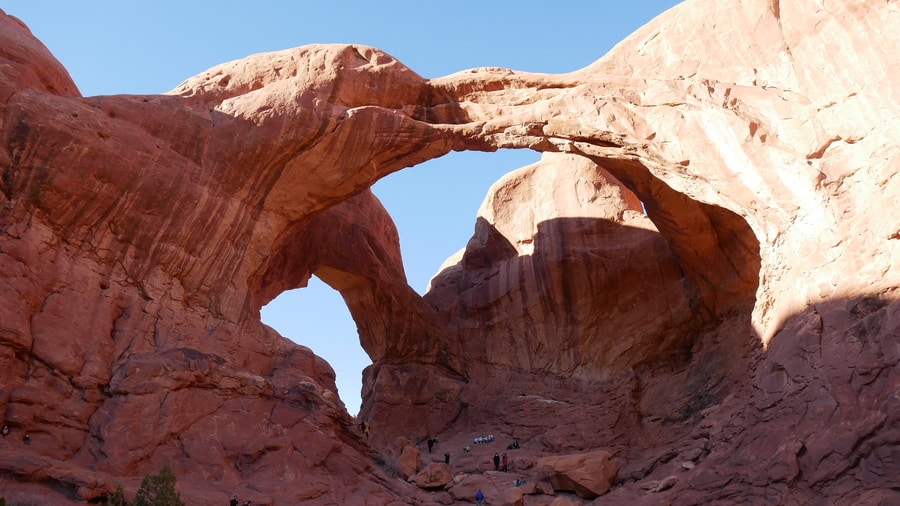
Hiking to the base of the massive landform is one of the top things to do in Arches National Park. The hike consists of a relatively flat walk along a 0.5 mile-long trail.
DELICATE ARCH
Even if you’re unfamiliar with the beauty of Utah’s national parks, I can almost guarantee that you’ve seen Delicate Arch before: it is an unofficial state symbol and is prominently displayed on everything from license plates to tourist brochures.
The best way to experience Delicate Arch is by hiking the scenic three-mile trail to its base.
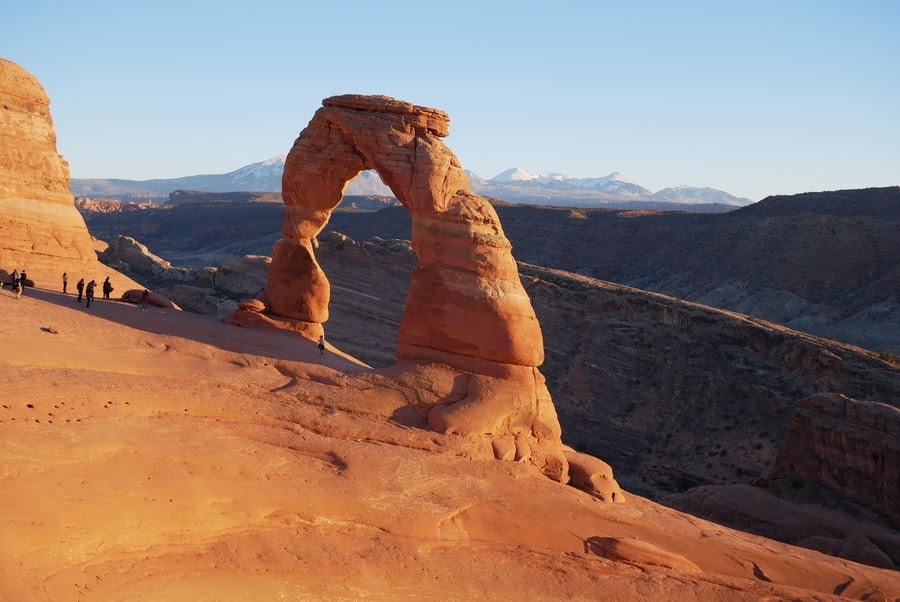
The trail to Delicate Arch leaves from Wolfe Ranch—a well-preserved 1908 pioneer cabin. From the wooden building, a footbridge crosses Salt Wash and ascends a large slab of slickrock.
The Delicate Arch Hike is one of the more strenuous jaunts in the park. Though it is relatively short, it climbs over a slab of rock that is almost completely exposed.
The upside-down U shaped arch is the national park’s top attraction.
And there are no two ways about it; the iconic landmark is a must-see.
But travelers with mobility issues or an aversion to hiking, will find that a nearby viewpoint allows for snapshots of the iconic arch at a distance.
WHERE TO STAY NEAR ARCHES
The Devil’s Garden Campground is the only lodging option within Arches National Park. A full-service camping area, it is beautifully situated near Tapestry Arch, among spectacular red rock boulders.
Between March 1st and October 31st, the campsite is reservable online, in advance.
During winter months, it operates on a first-come first-served basis.

Since hotels and guesthouses do not exist within the park, most travelers will choose to stay in nearby Moab. The small town of Moab is centrally located between Arches and Canyonlands’ Island in the Sky. It is the main gateway to Arches National Park.
Moab boasts everything from budget backpacker accommodations to luxury resorts. It is a fantastic home base, full of independent eateries, grocery stores, and shops.
The best places to stay in Moab depend on your budget and lodging preferences. Hotels with particularly good reviews include the Mainstay Suites (budget), the Hoodoo Moab (mid-range) and the Sunflower Hill Inn (upper-end).
WHEN TO VISIT ARCHES NATIONAL PARK
While accessible and heavily-trafficked year-round, Arches National park is most enjoyable between the months of October and May. In summer months, hoards of tourists descend on the park and daytime temperatures frequently soar above 100 degrees.
If you’re traveling to Arches National Park during the summer, make sure to bring plenty of water and sunscreen. If you don’t, you may leave the park looking the same color as the rocks.
****
Arches National Park’s erosion-sculpted landscape is like an outdoor museum of ornate rock sculptures. Teeming with photo opportunities at every bend, it attracts photographers, hikers, desert-lovers, and nature enthusiasts.
The national park’s photogenic landscape is among the most recognizable in the United States. Its iconic attractions are plastered on everything from quarters, to license plates, to tourist brochures.
Universally heralded for its delicacy and artistry, Arches National Park is the type of place that perfectly exemplifies Utah’s awe-inspiring red rock splendor.
___________________________________________
Did You Enjoy This Resource on the Top Things to Do in Arches National Park? Pin It!
